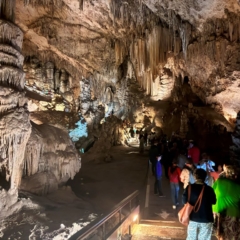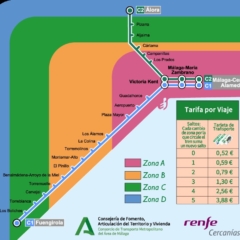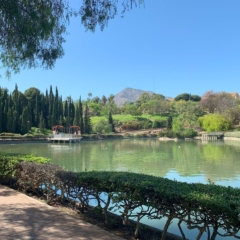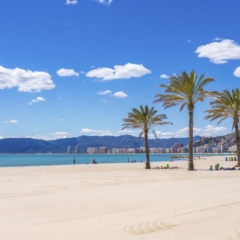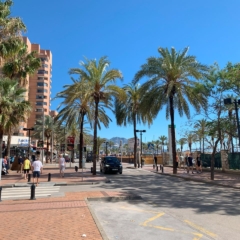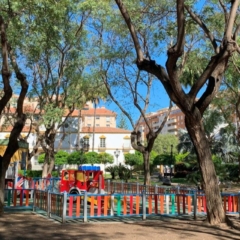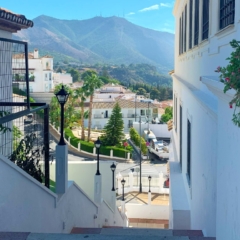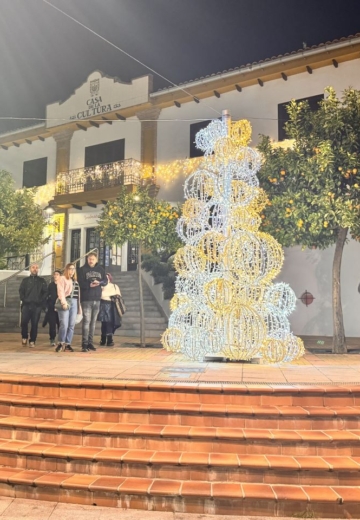Visiting Nerja – a very visual guide
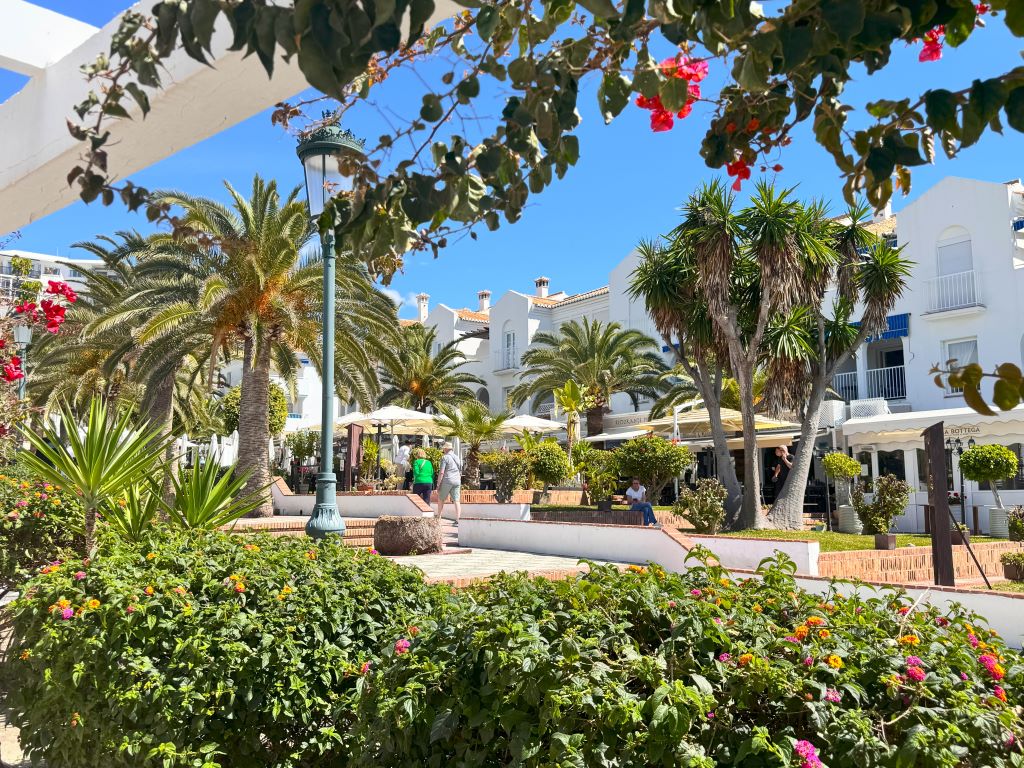
Nerja is a gem of the Costa del Sol, located less than 60 km from Malaga and about 90 km from Granada, connected to both by bus. It is home to the famous Balcón de Europa and the Nerja Caves, an impressive geological formation fully prepared to receive visitors. Nerja is also very close to Frigiliana, one of the most beautiful white villages of Spain, and a very beautiful town in its own right. I spent a day there recently – I visited the Cave of Nerja in the morning and the town in the afternoon – and I’ve seen a lot of great reasons to visit Nerja. Come check them!
From Nerja Cave to Nerja
I visited Nerja with my in-laws, that came from Estonia and were particularly interested in visiting the cave of Nerja. After being mesmerized by the enormity of the cave, we went to see the town by train – the cute, red sightseeing train that departed from the cave’s complex. Along the way, the view was already promising:

We’ve passed by an intriguing aqueduct – the Acueducto del Águila (Eagle Aqueduct), built in the nineteenth century to bring water to the sugar cane plantations of the time – that I would meet again later, in the Museum of Nerja:
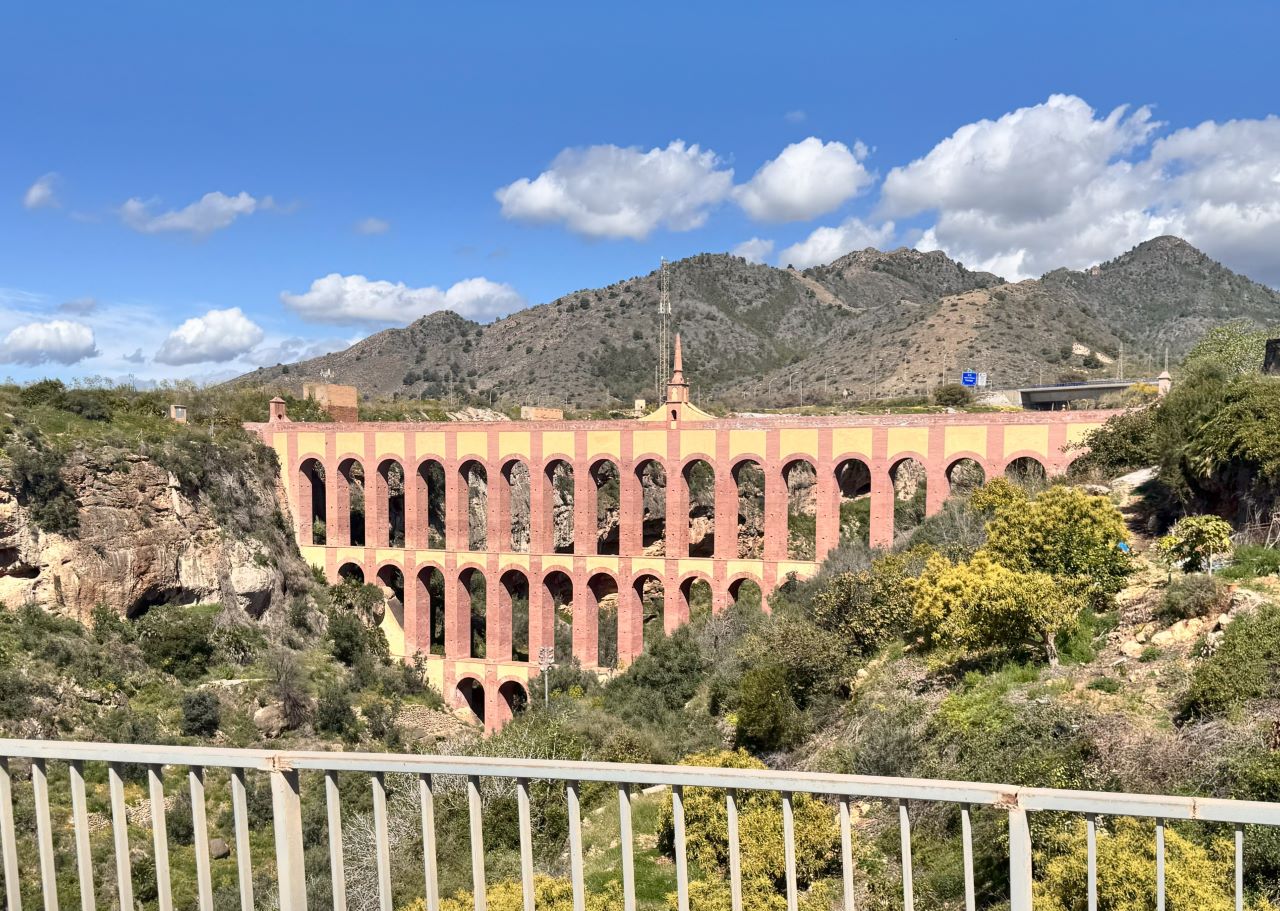
And then entered – and crossed – much of Nerja, already visiting a portion of it while on the train. We’ve passed Plaza Cantarero…
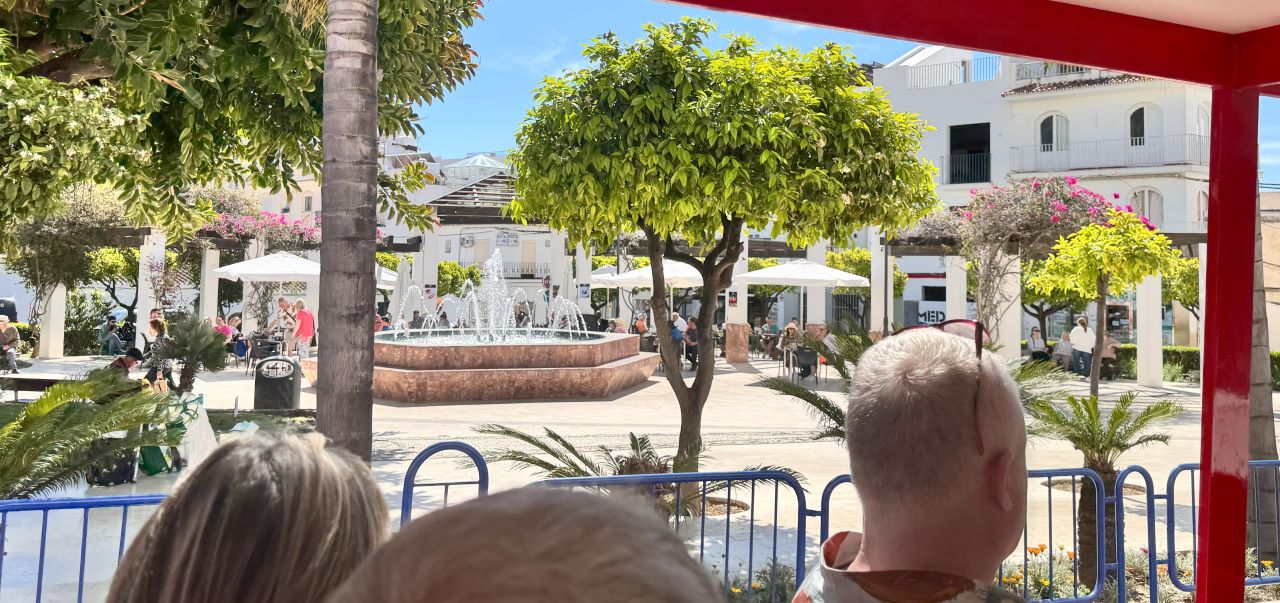
… and the Plaza de la Ermita…
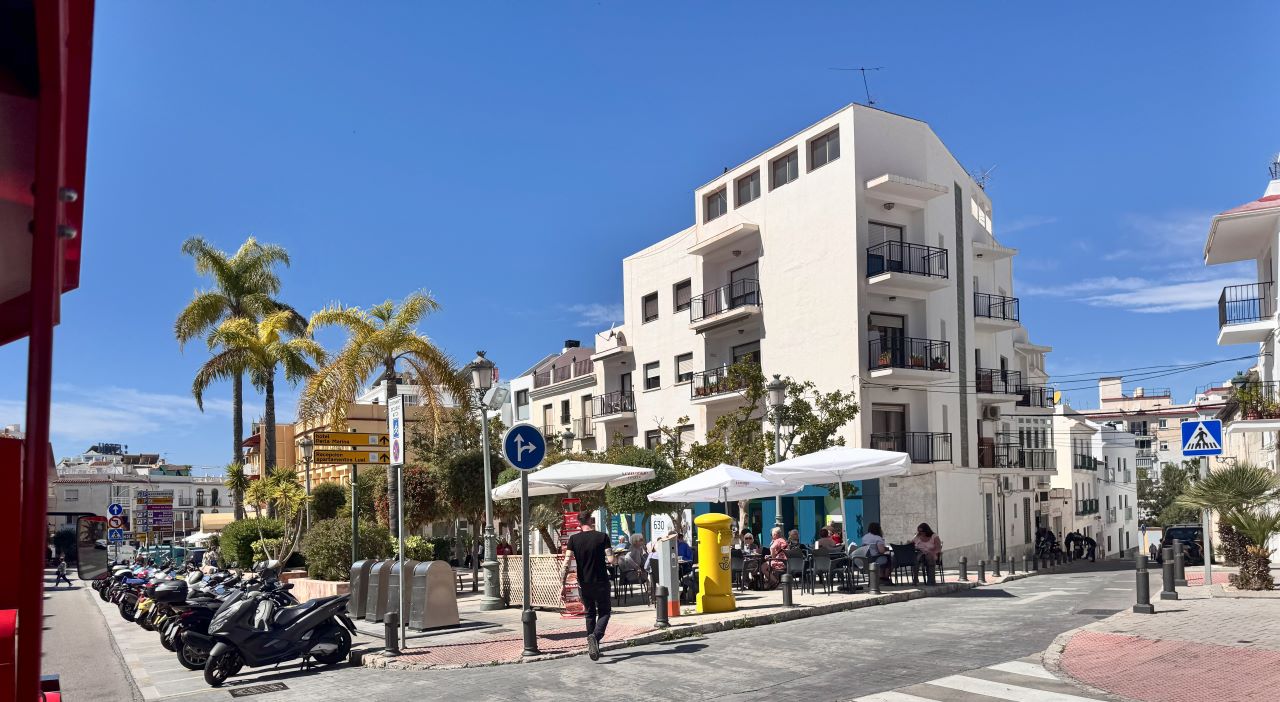
…to finally get to the adorable Plaza de los Cangrejos, whose picture is on the cover of this post. The trip itself took a bit less than 20 minutes.

Plaza de los Cangrejos
A few steps after leaving the train, we saw this:
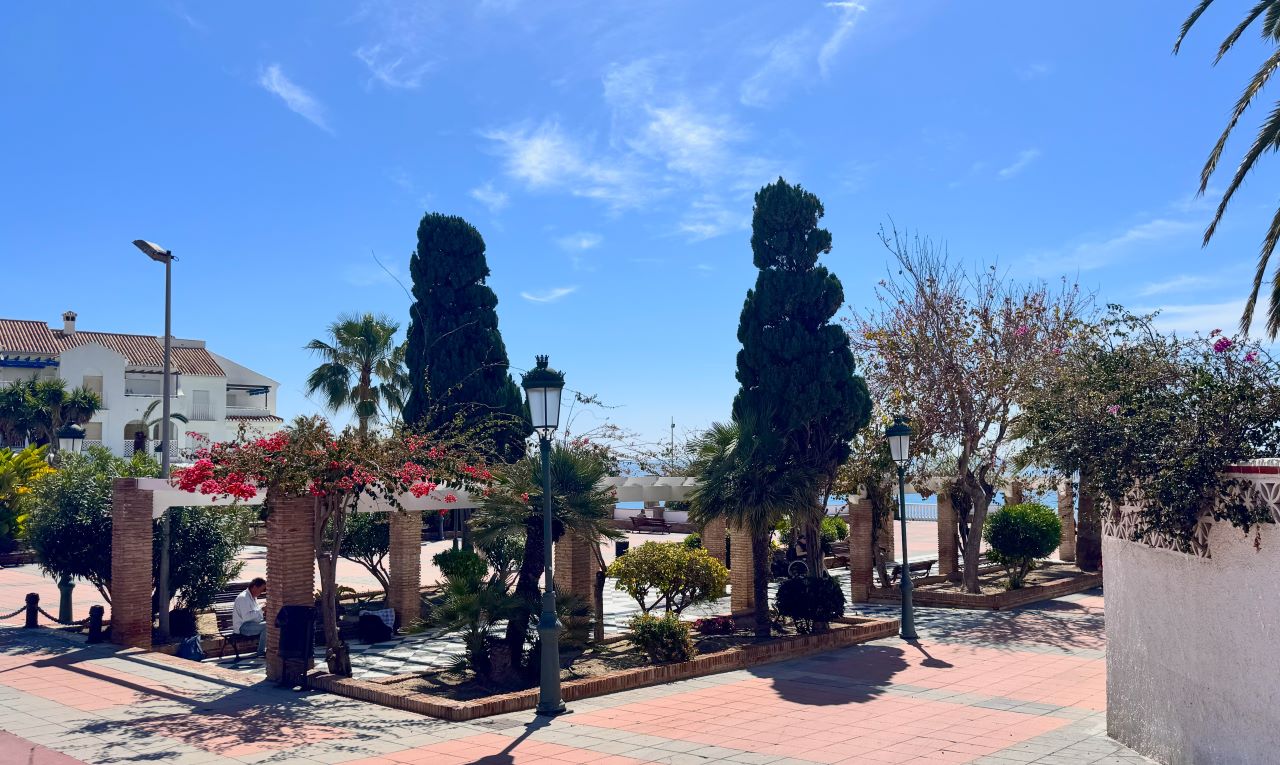
This is the Plaza de los Cangrejos, one of the beautiful squares of Nerja. Less than 20 minutes in the town, and I was already understanding the appeal of Nerja – it was the third beautiful, inviting and lively square of the day! This postcard-worthy square just gets better as we walk:
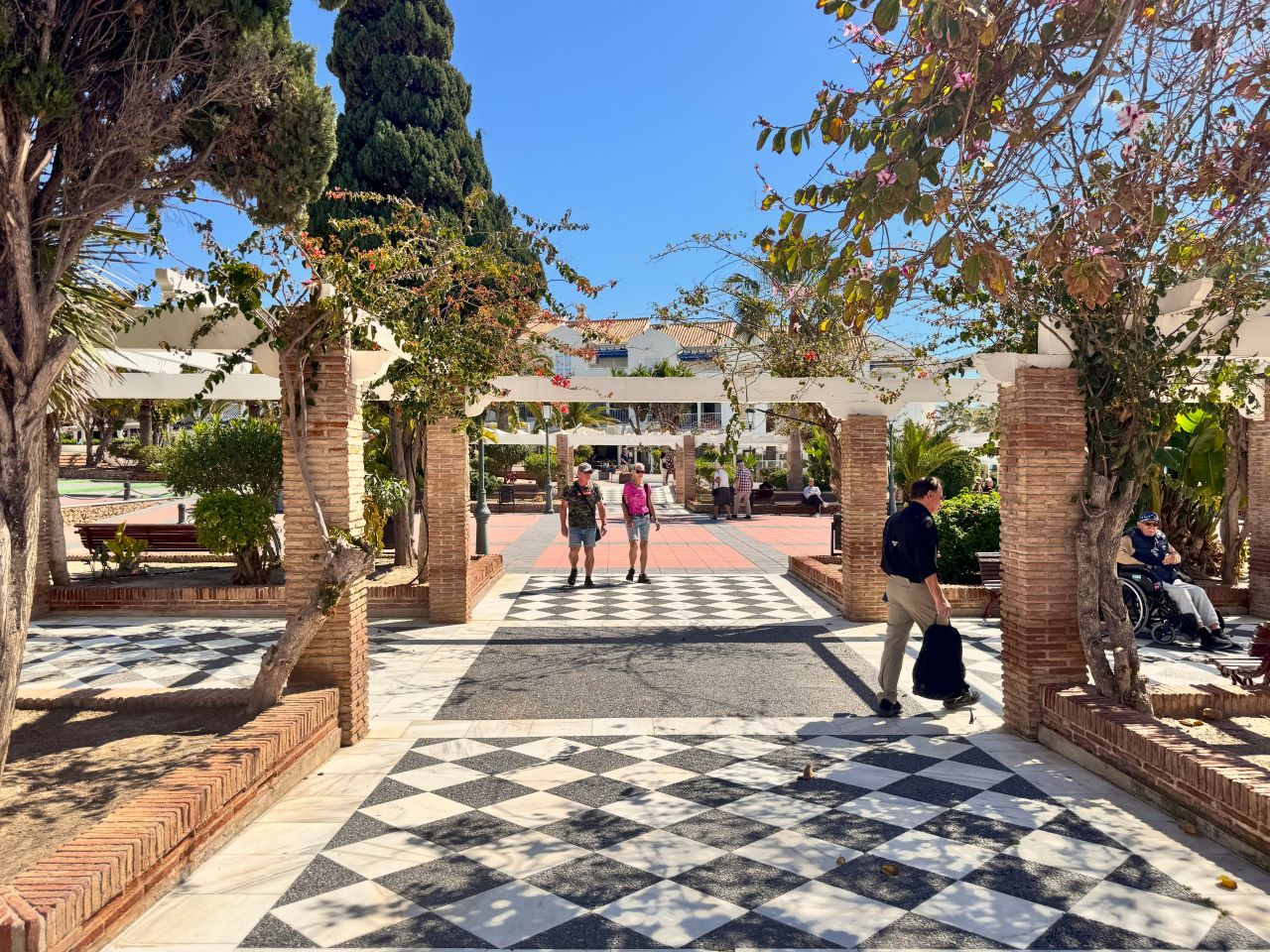
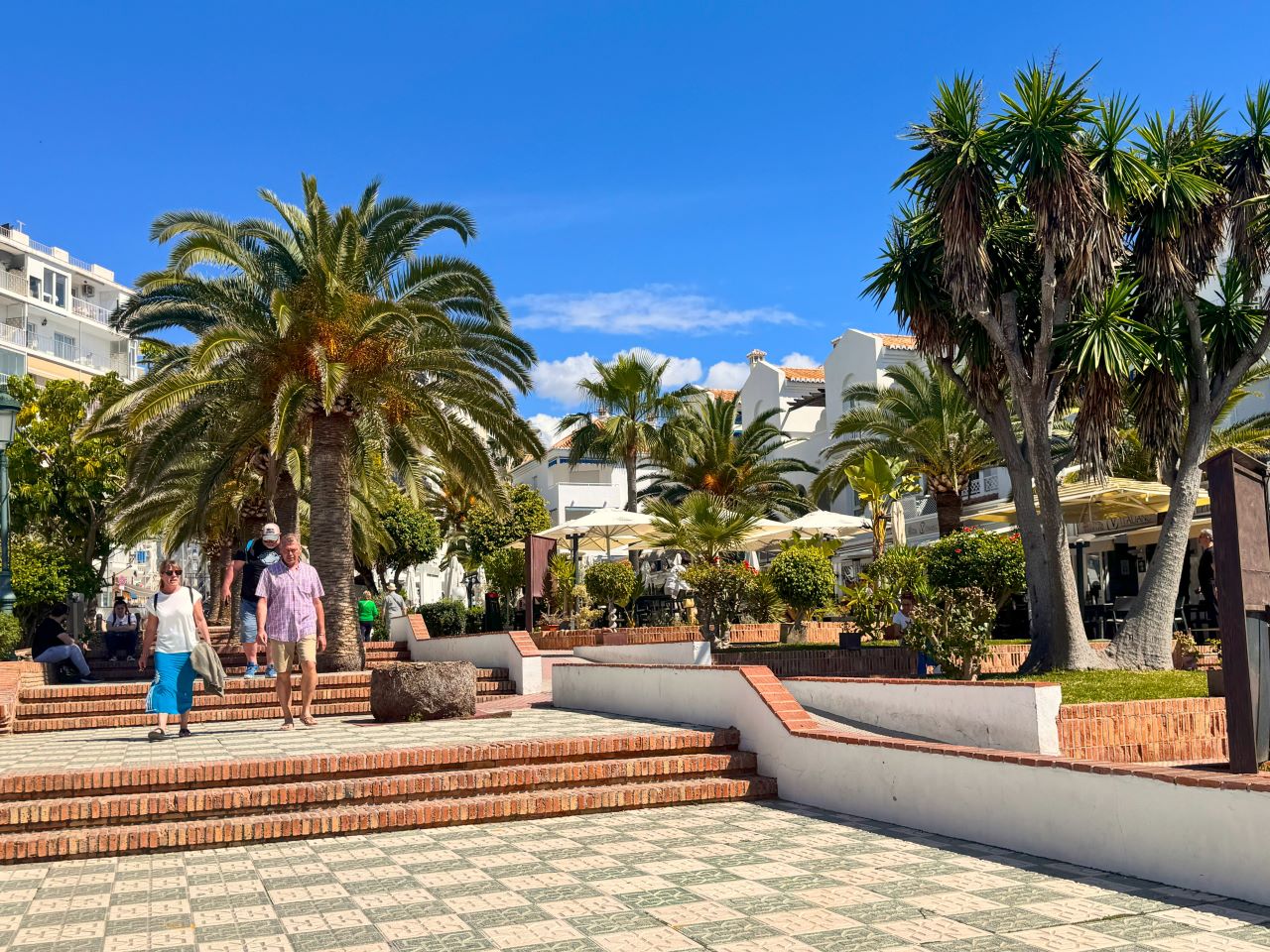
We’ve stopped there to enjoy the view and had lunch in a restaurant called Bamboo. It was great food and price; meal for three, plus drinks and appetizer cost us about 50 euros.

From the Plaza de los Cangrejos we see the Playa de la Torrecilla (Beach of the Little Tower), already pretty much being enjoyed in early April! The beach owes its name to the tower whose remains you can (kind of) see on the rocky part of the beach and in the image below.
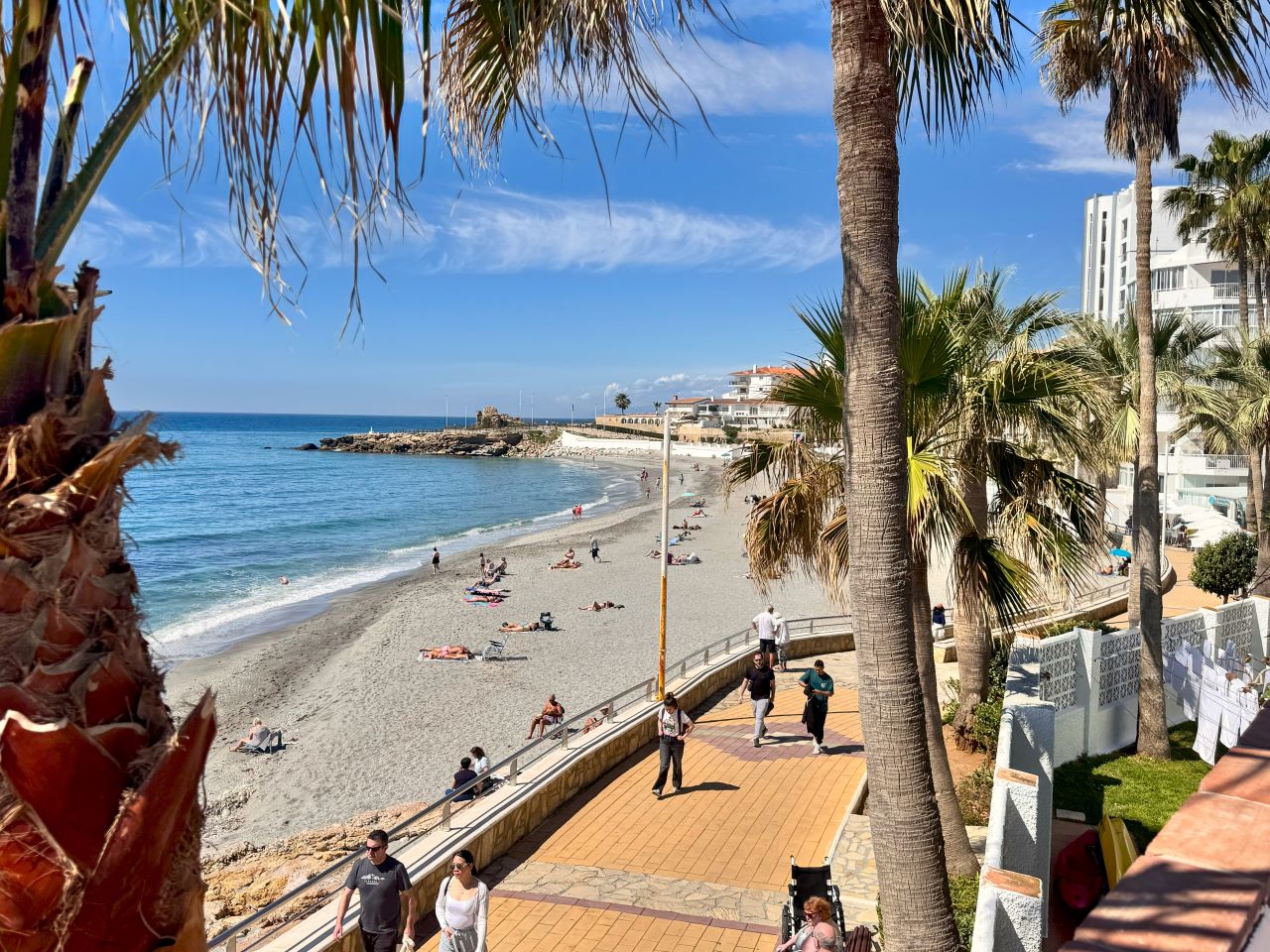
Our goal was to get to the famous Balcón de Europa, of course, but the way to get there lead us through two cute, pedestrian streets full of appeal – Calle Málaga and Calle el Barrio.

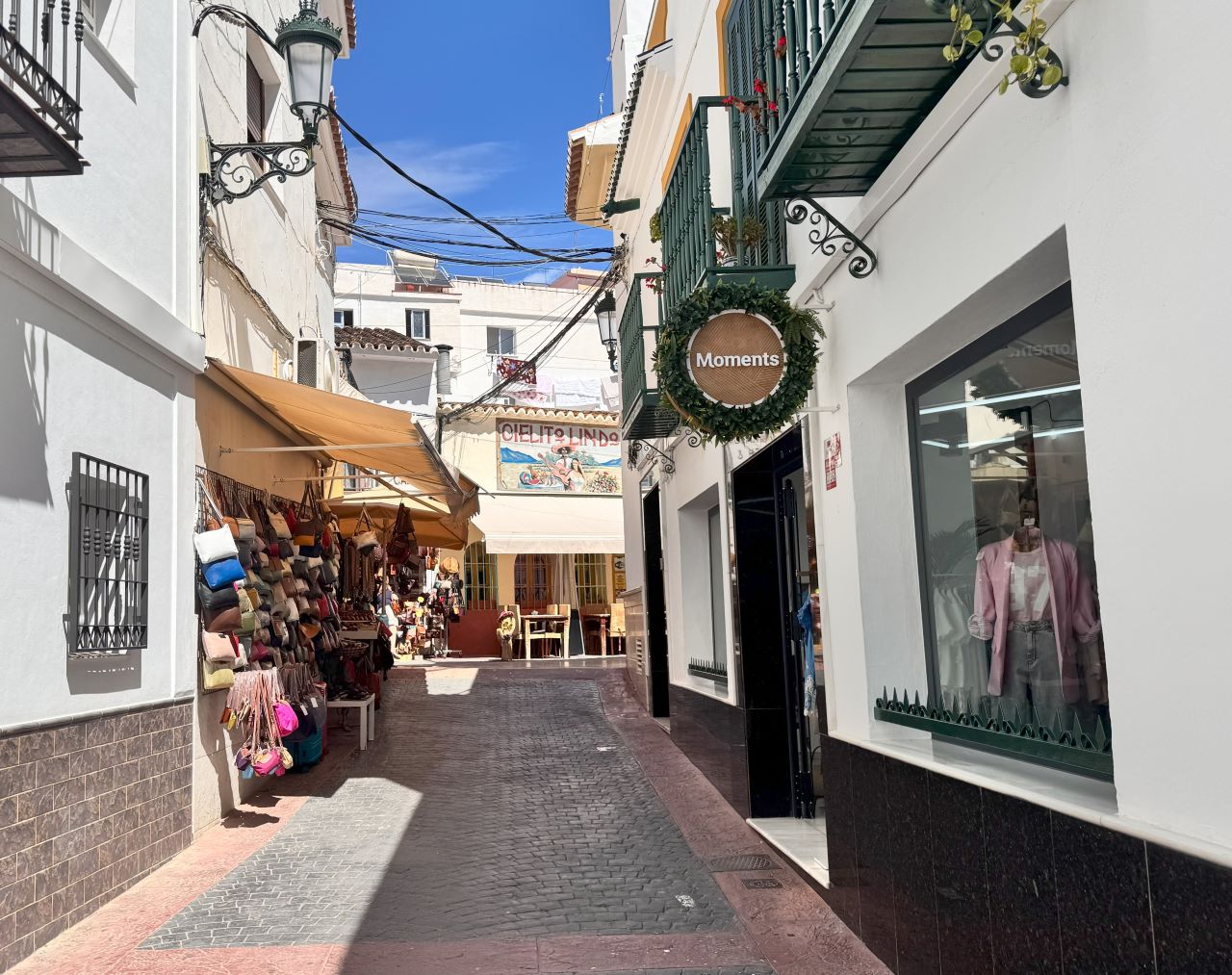
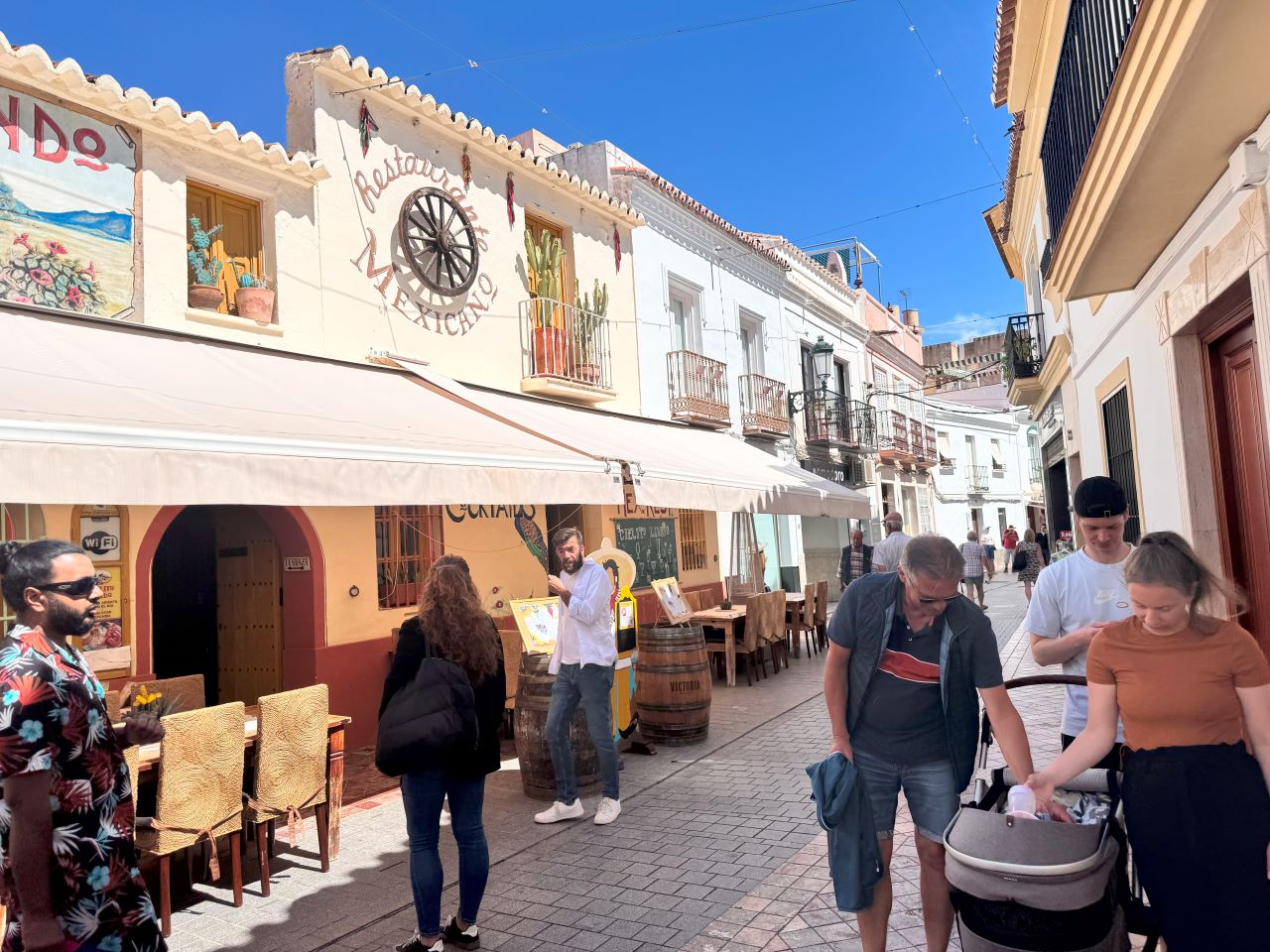
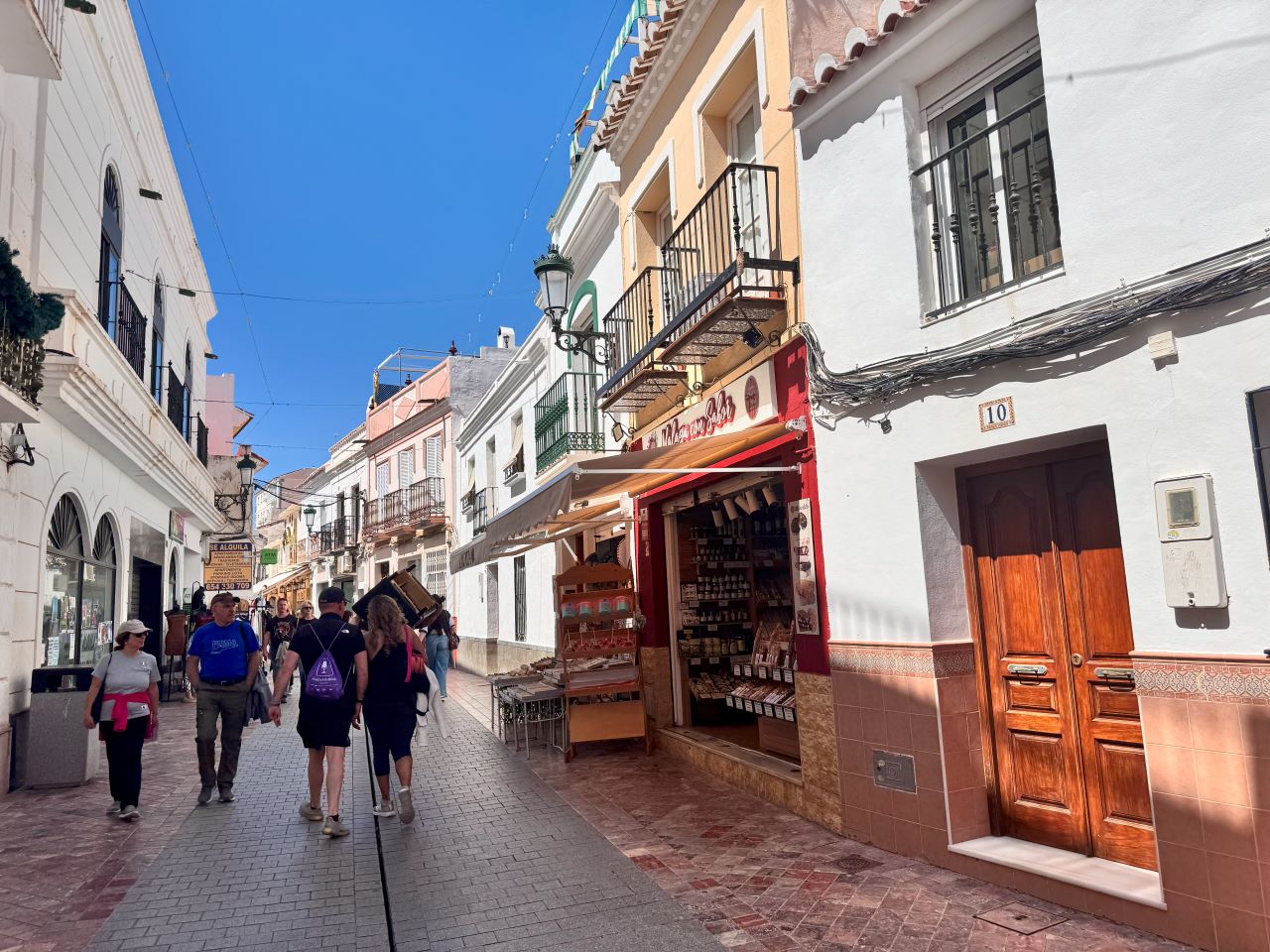
Both streets have interesting shops, nice restaurants and pubs. There is even one more square – Plaza de Cavana. When visiting Nerja, you’ll never be too far from a good place to sit, enjoy a beer, something to snack, a good talk and some people-watch.
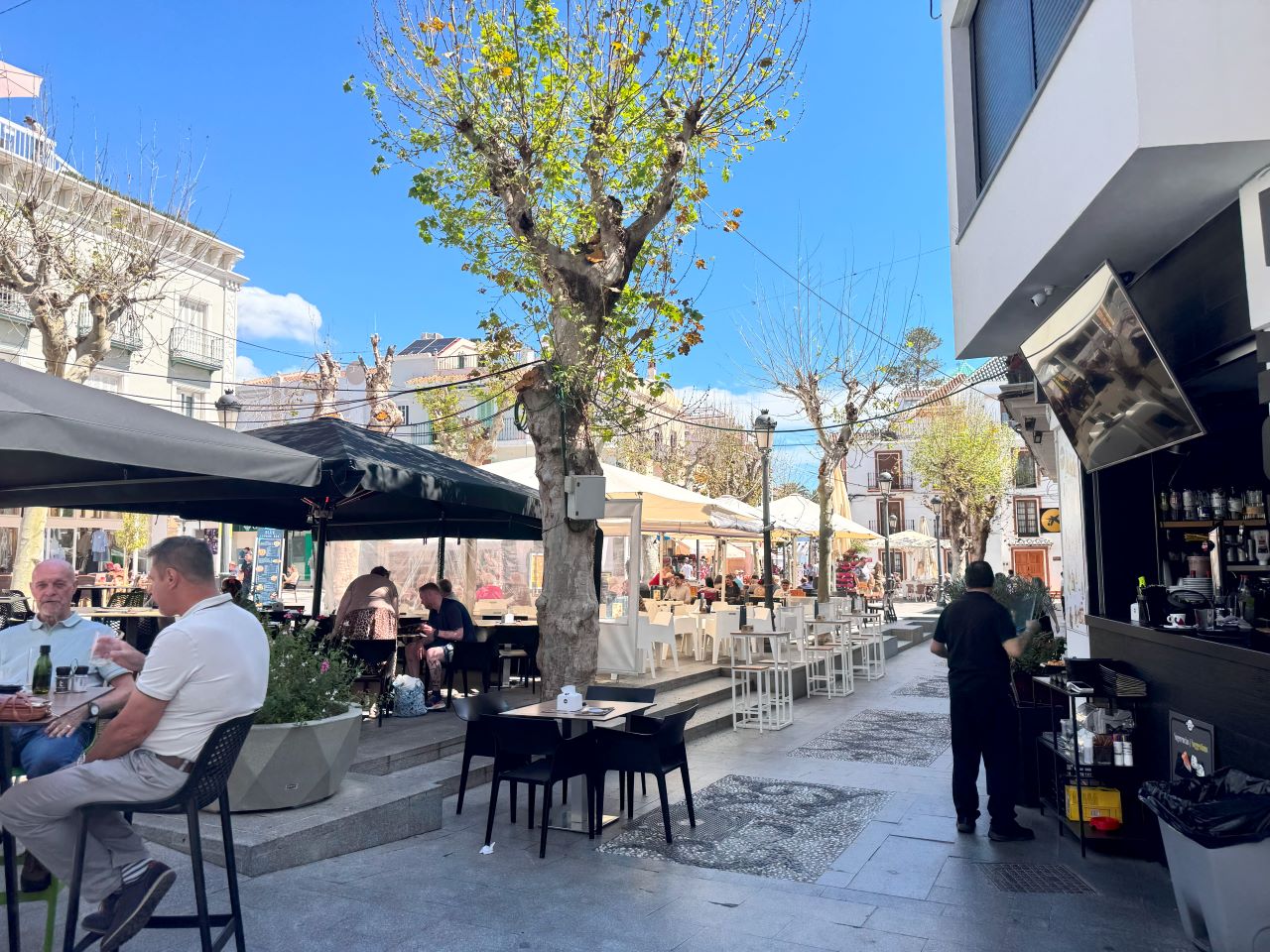
Above and below, Plaza de Cavana.
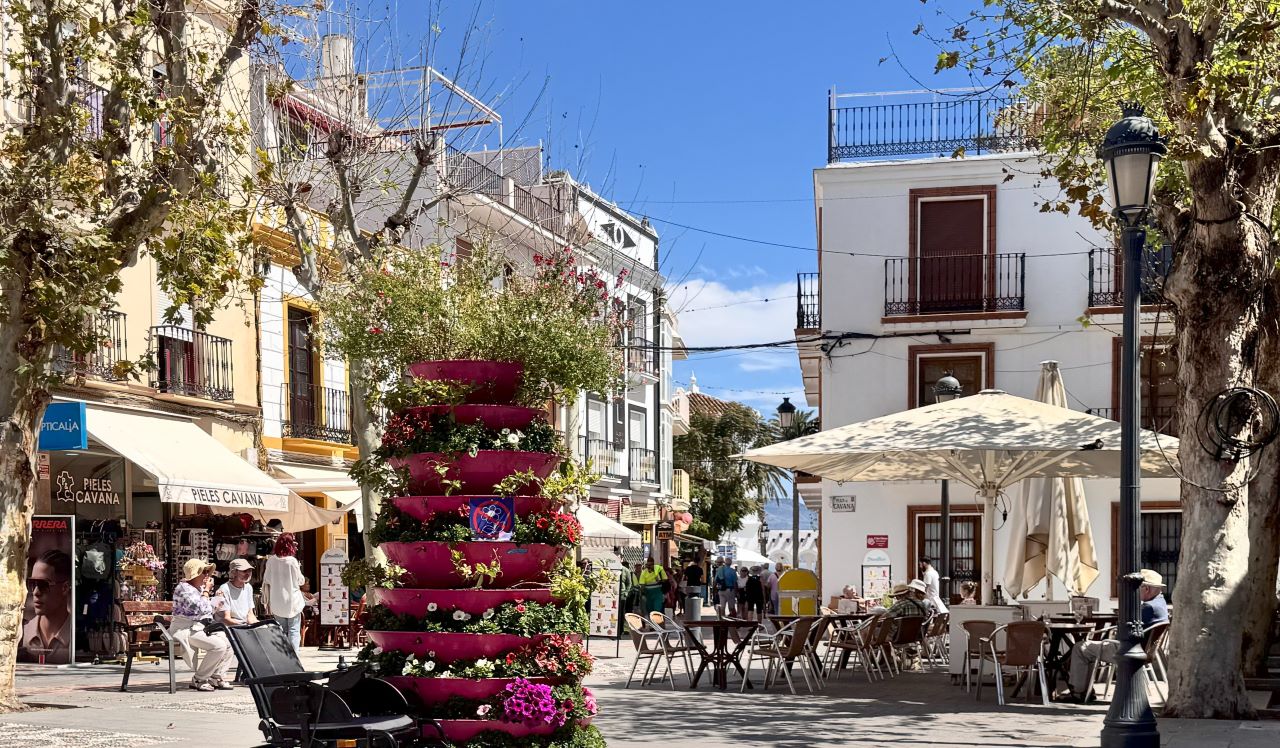
In the picture above, you can already have a glimpse of what is to come: the Balcón de Europa! 😉
Plaza Balcón de Europa
The Balcón de Europa (Europe’s Balcony) is Nerja’s main postcard. It is a beautiful point from which there are amazing views. Notice the arch pattern? It is the same present in that aqueduct we’ve seen before. The arch element is repeated often in Nerja’s architecture; I wonder if the idea behind it is to remind that Nerja, as the rest of the South of Spain, has a long history that dates back to the Phoenicians, then Romans – and their arches -, Muslims and finally, the Spanish Christians.
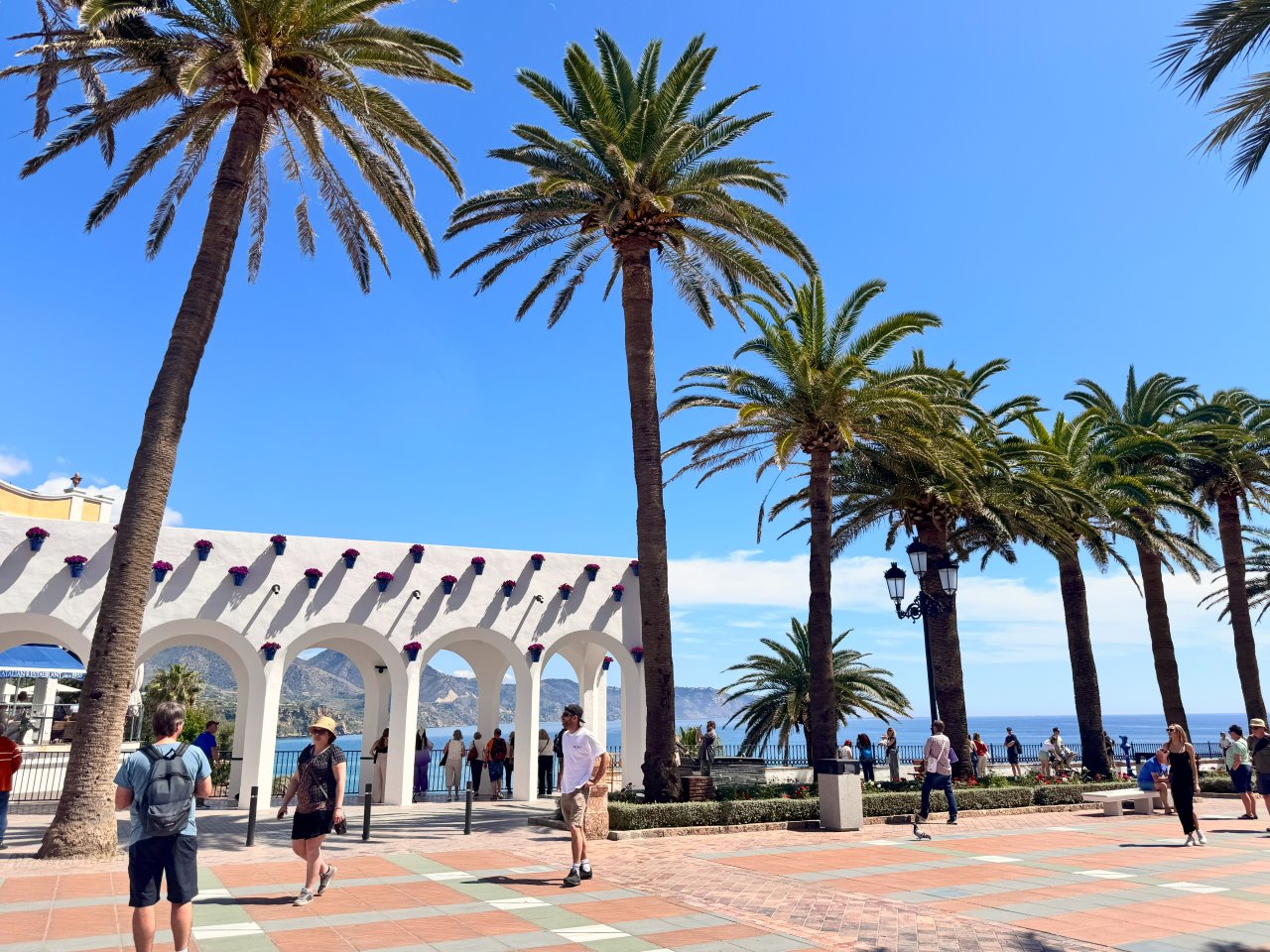
The history of the Balcón de Europa and the Nerja that we see today goes back to the Spanish Kings conquest of Andalusia, in the 15th century; Nerja, though, preceds that, as mentions of the town were found in Muslim texts dated from the year 917. Back then, Nerja was located inland and was an agricultural site. After the Spanish conquest, though, the Kings decided to build a fortification where today the Balcón de Europa is located, to help protect the area.
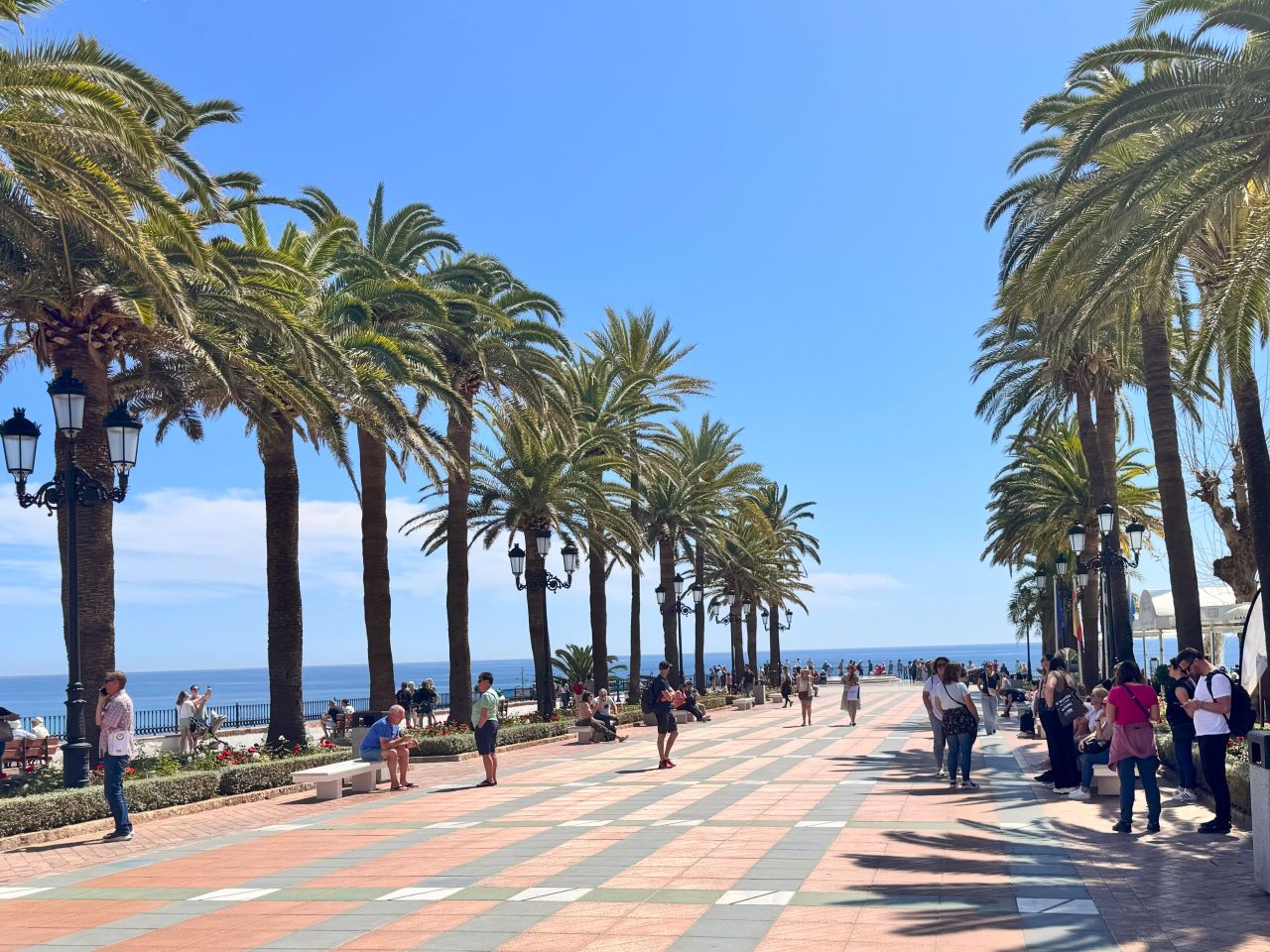
It was the construction of that fortification that gave origin to the current, seaside Nerja – and not the other way around. Over the centuries, the town expanded from the Balcón; it is no coincidence, then, that the main church of Nerja, Iglesia El Salvador, is right by the square, and the Ayuntamiento (Town Hall) is close by as well, as these are the first two structures built on Spanish settlements.
Above: Iglesia El Salvador. Spin around and you’ll find the arches. 😉
Back to the Balcón de Europa itself, it may seem a bit too simple at first…
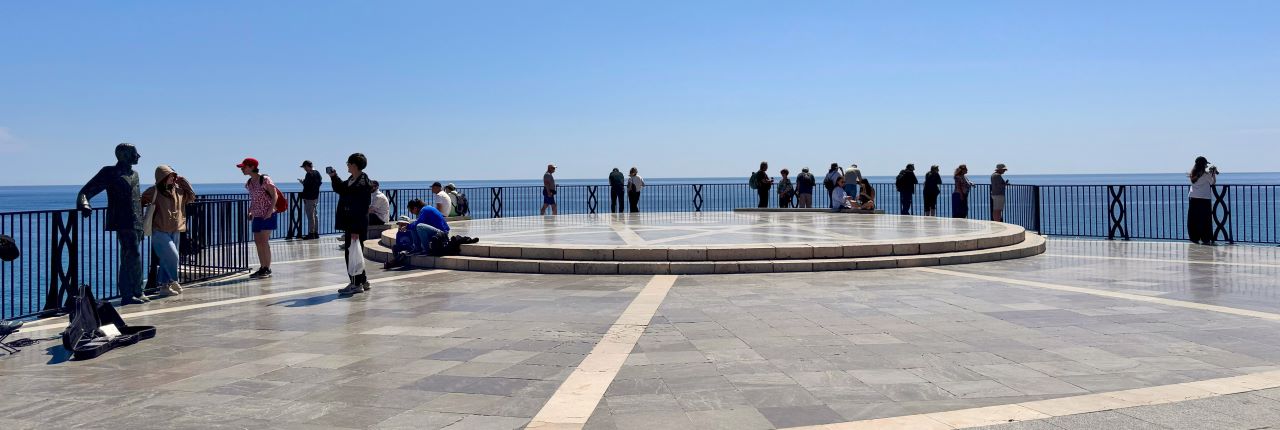
…but it has a restaurant under…
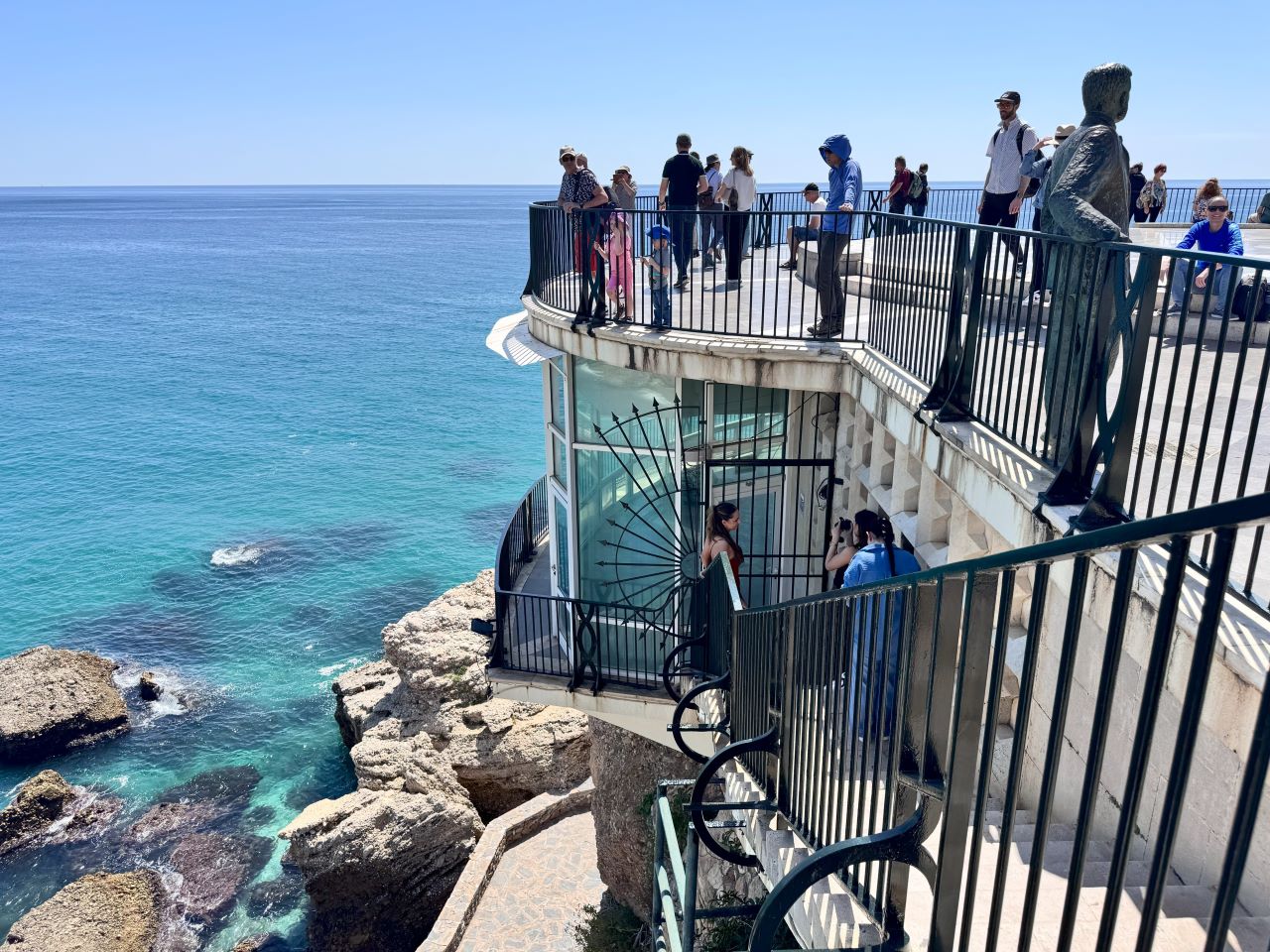
…and the views are magnificent!!!
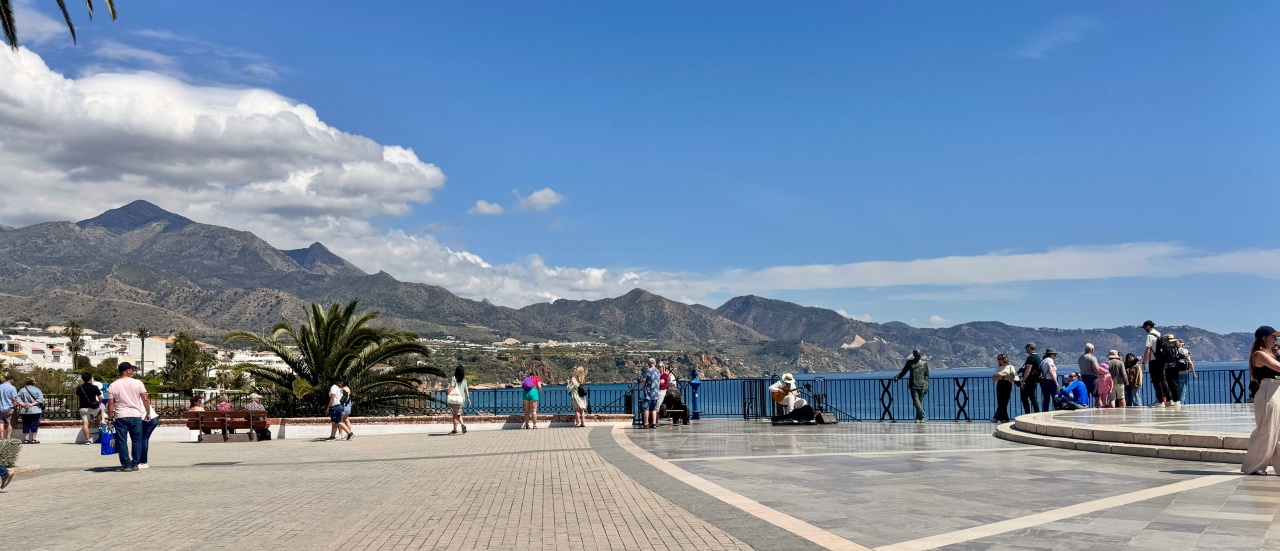

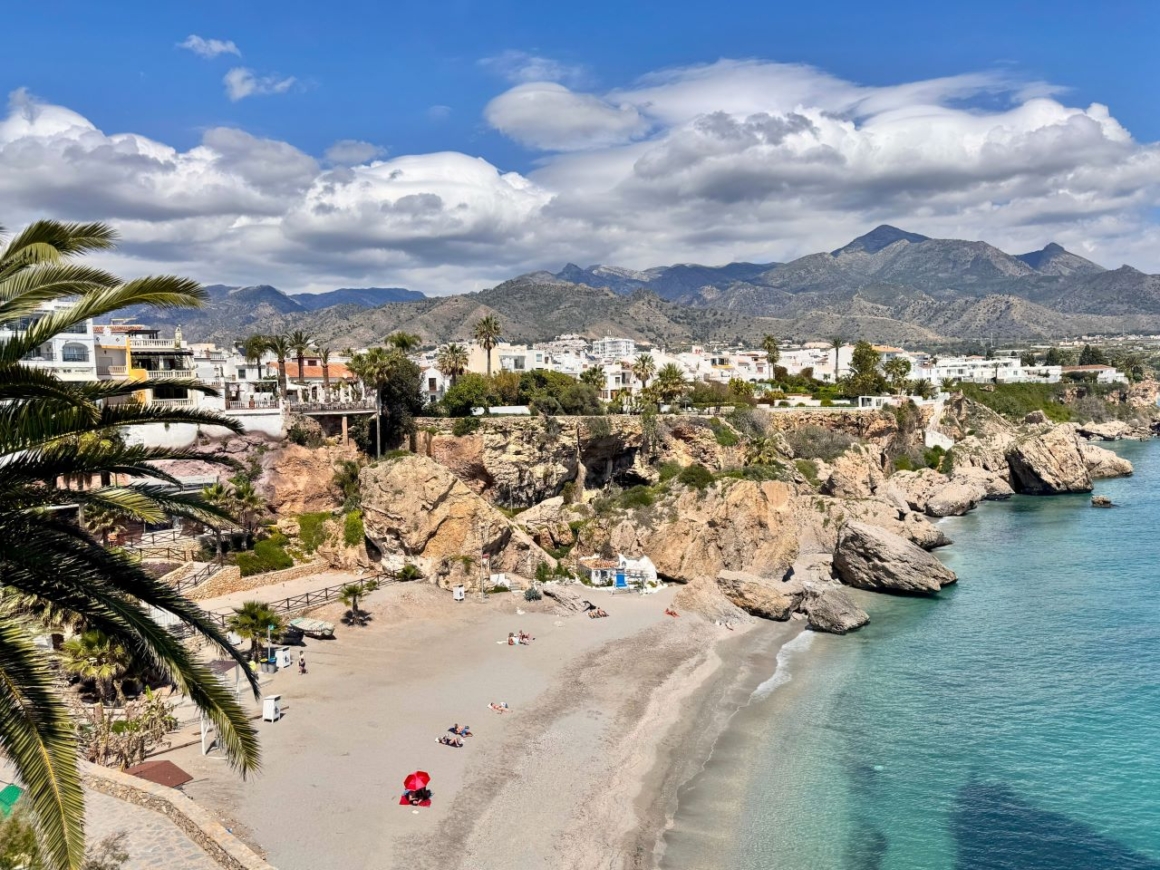

Let’s go back to the arches, so that we can enjoy the area a bit more. In the place where the arches are today, there used to be a government house and… a prison! I wonder if the prisoners had this view; if so, crime rates were probably quite high!!!
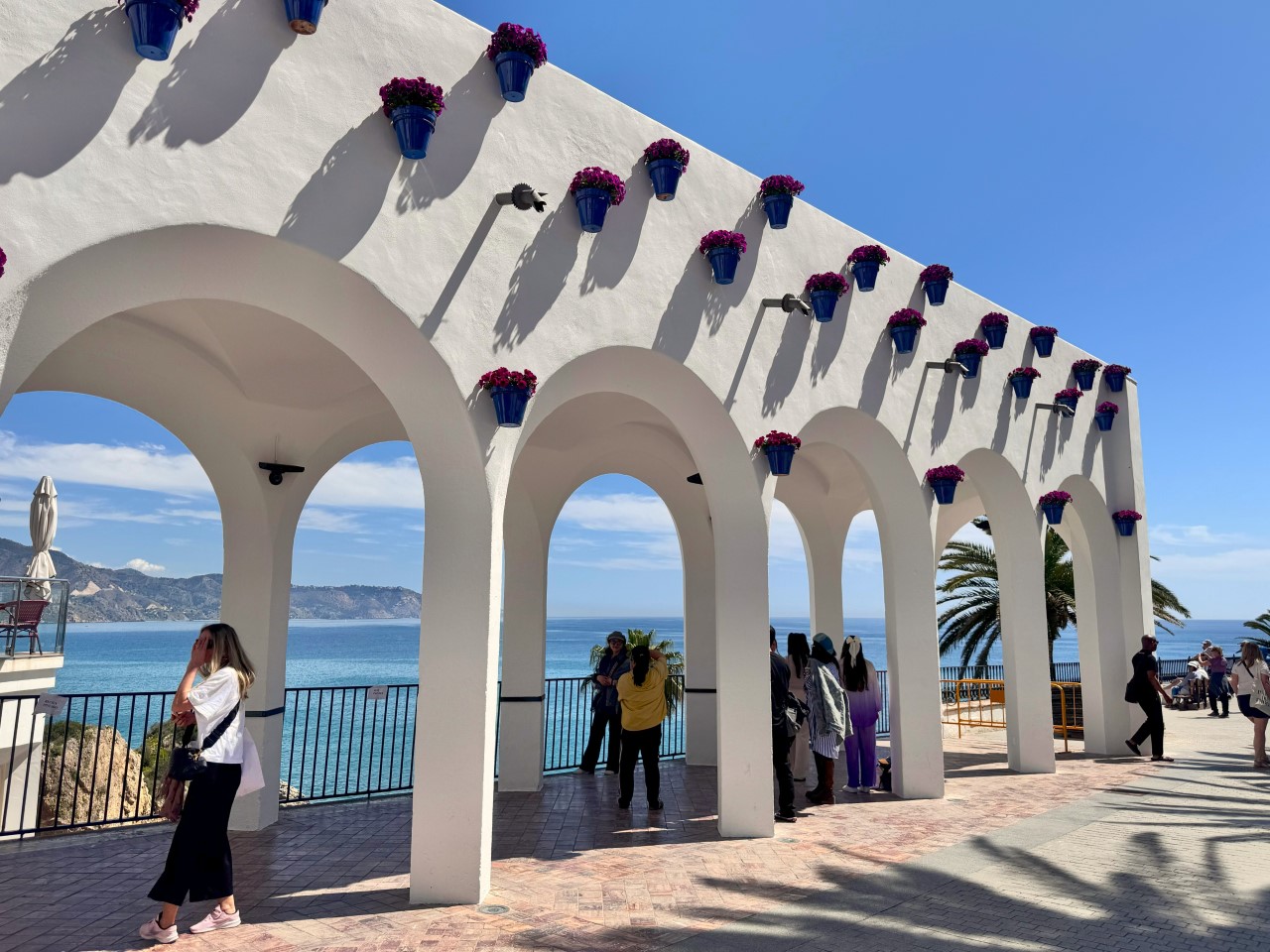
The arches were built around 1962-65, as part of the remodeling of the area of the Balcón de Europa. This was after the discovery of the Cave of Nerja, right in the period when tourism was starting to flourish in the Costa del Sol. The arches were built to be exactly what they are: one of Nerja’s postcards. Nowadays, it is also a place for people to take selfies, of course. 🙂
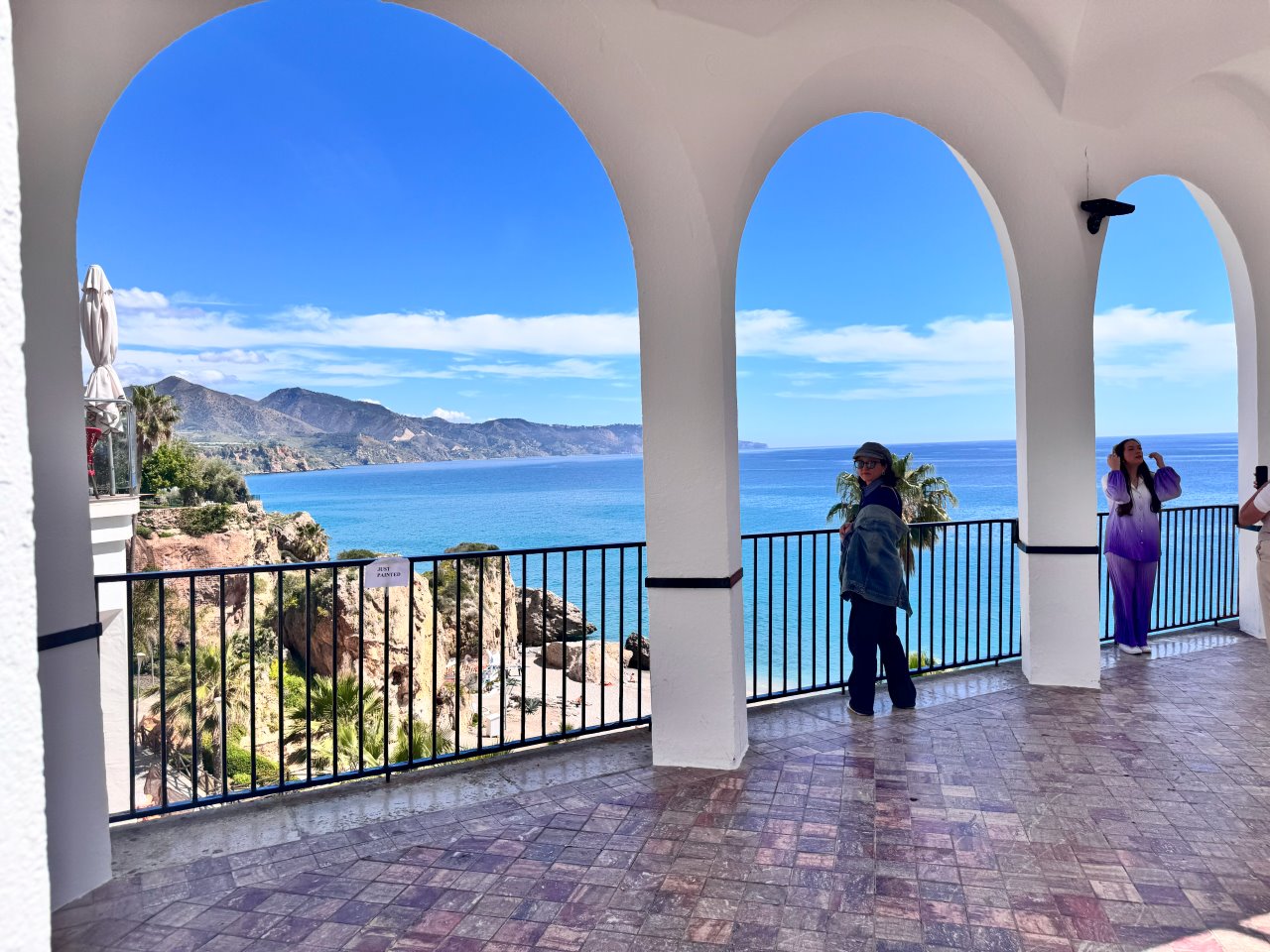
The view of Playa Calahonda from here is even more outstanding than from the Balcón de Europa:
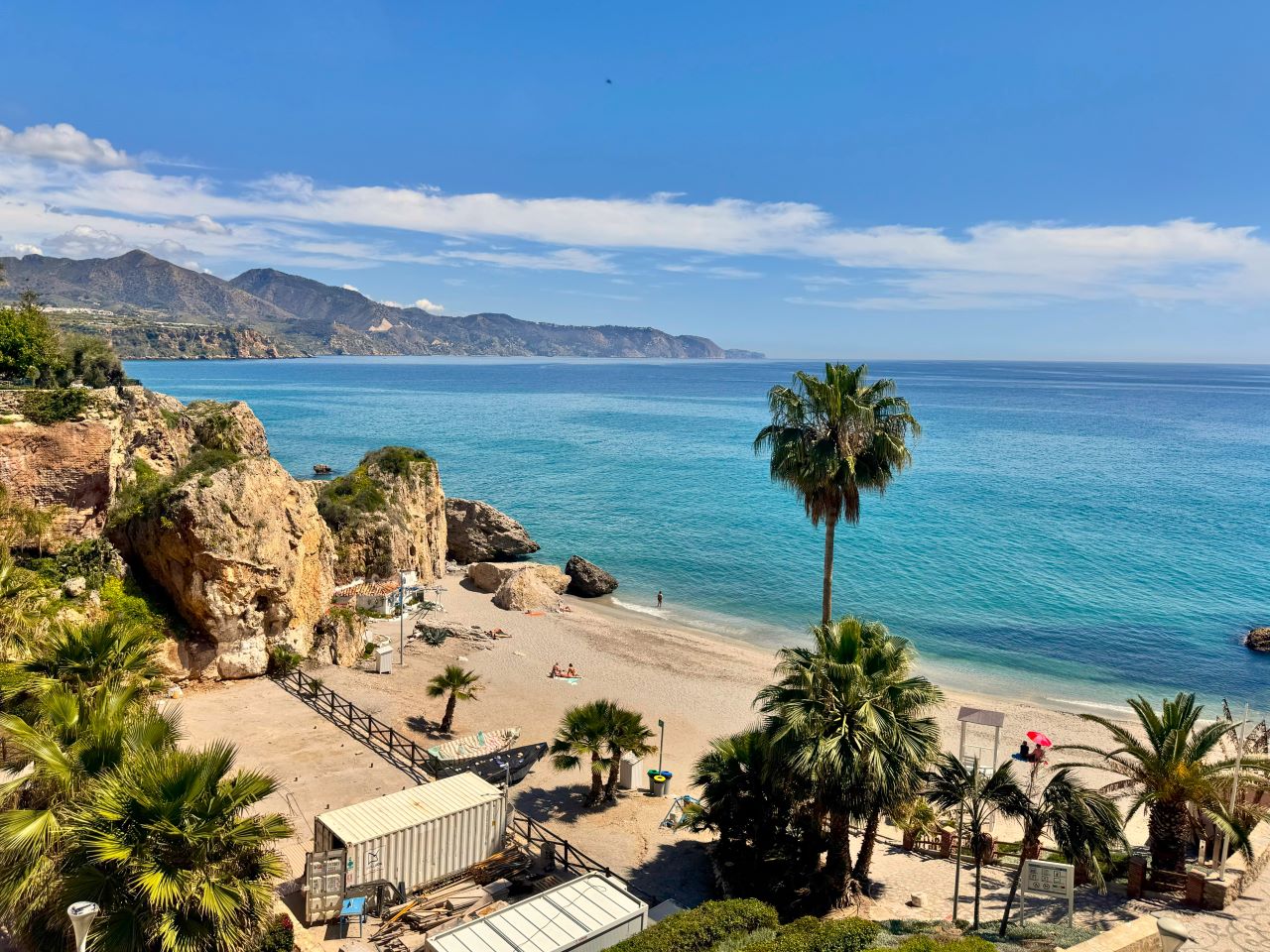
On our way to the next stop, more beautiful restaurants kept popping up. On the left, the interior of restaurant Marissal, still in the Balcón de Europa Square; on the right, a continuation of that square well among buildings!
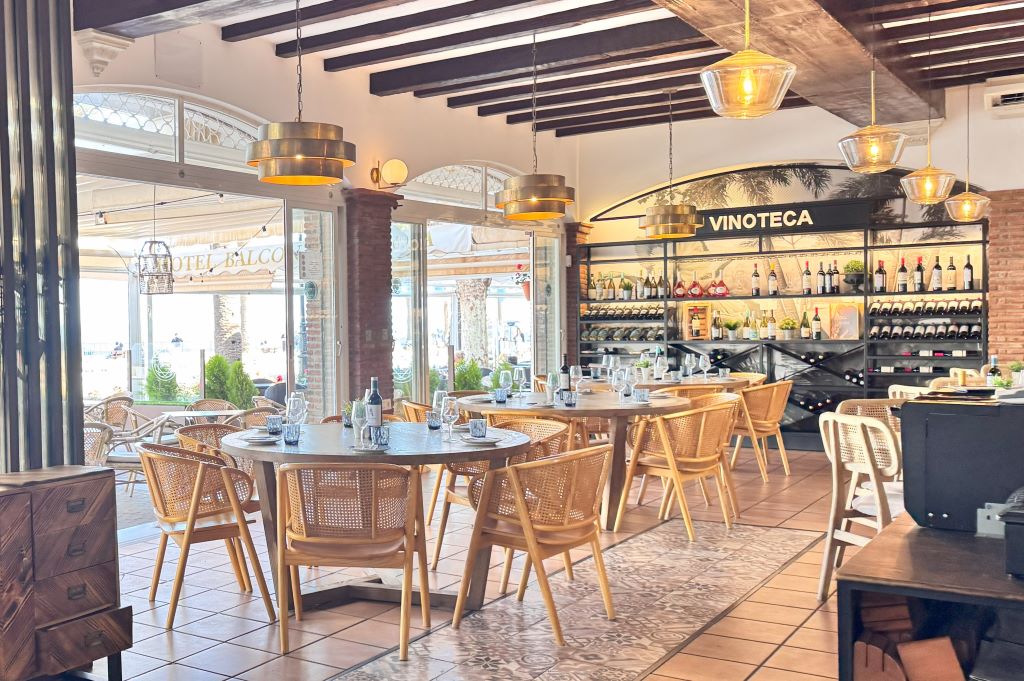
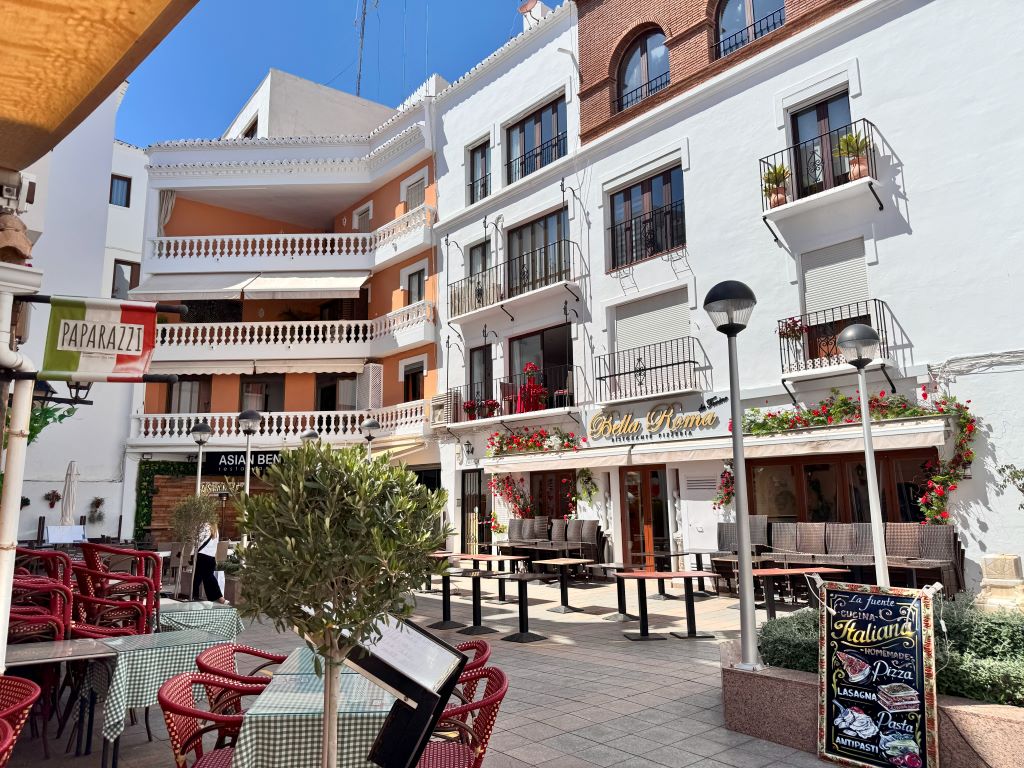
Plaza de España and Museum of Nerja
In a very short walk from the Balcón, with Google Maps leading us towards the Museum of Nerja, we found one more square (really!). This time, it was the main civic square of the town, the broad Plaza de España, with the Town Hall on one of its sides, the Spanish flag and the Museum on the back. Restaurants, cafés, hotels and even a convenient Carrefour complete the borders of Nerja’s Plaza de España.
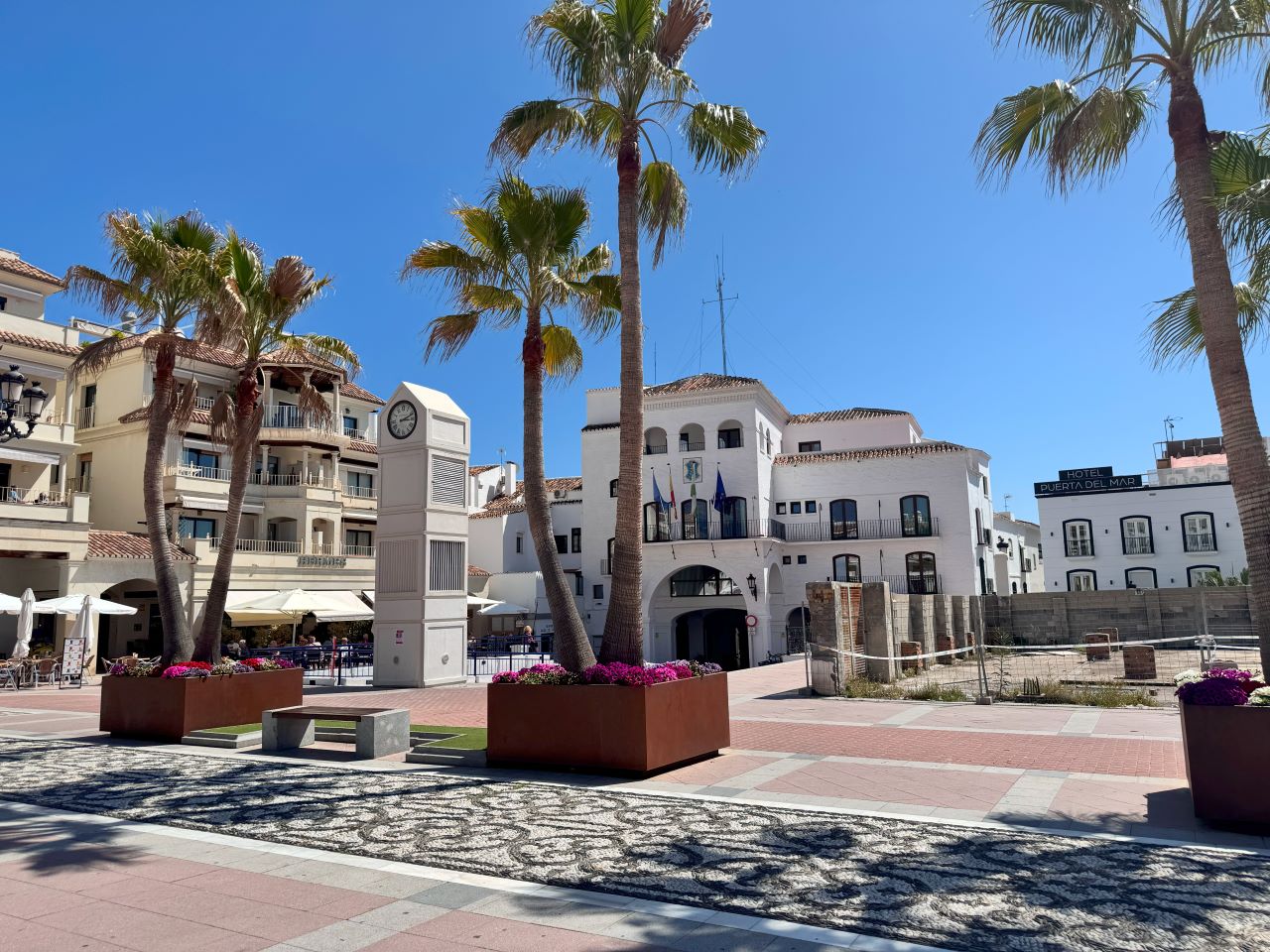

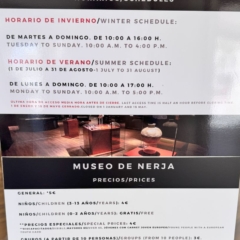
The Museum of Nerja has two floors dedicated to the history of the town and one dedicated to the Cave of Nerja. There is an audioguide available for free, that you can download on your phone – the same one used for the Cueva de Nerja, actually; links for Iphone and Android here. Times and prices can be checked on the image (click to expand) or on their site, though I didn’t find quite the same information on both…
According to the poster by the Museum, it can be visited for free on Mondays during summer. Site, poster – and my own experience! – agree that entrance to the Museum is included in the ticket to the Cave of Nerja. It is good for one visit within 10 days of purchase.
In the Museum you can learn about the Arabic origins of Nerja and Maro; read about the remains of the Roman occupation in the area and discover about the many watchtowers along the Axarquía’s coast (the eastern part of the Costa del Sol).
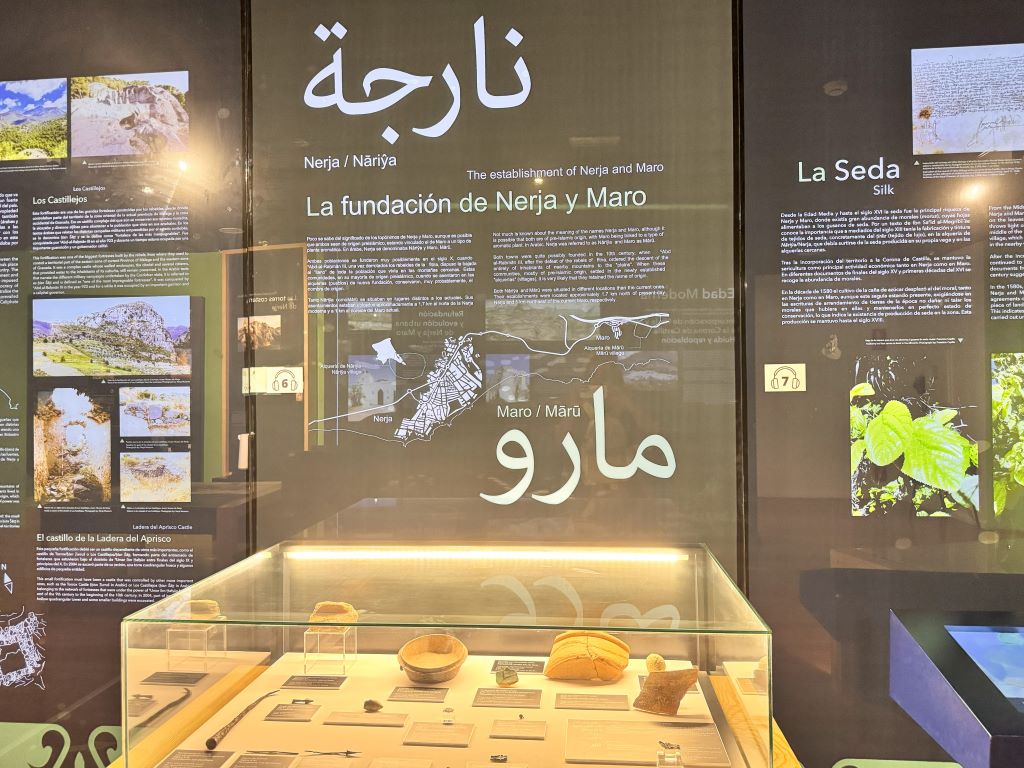
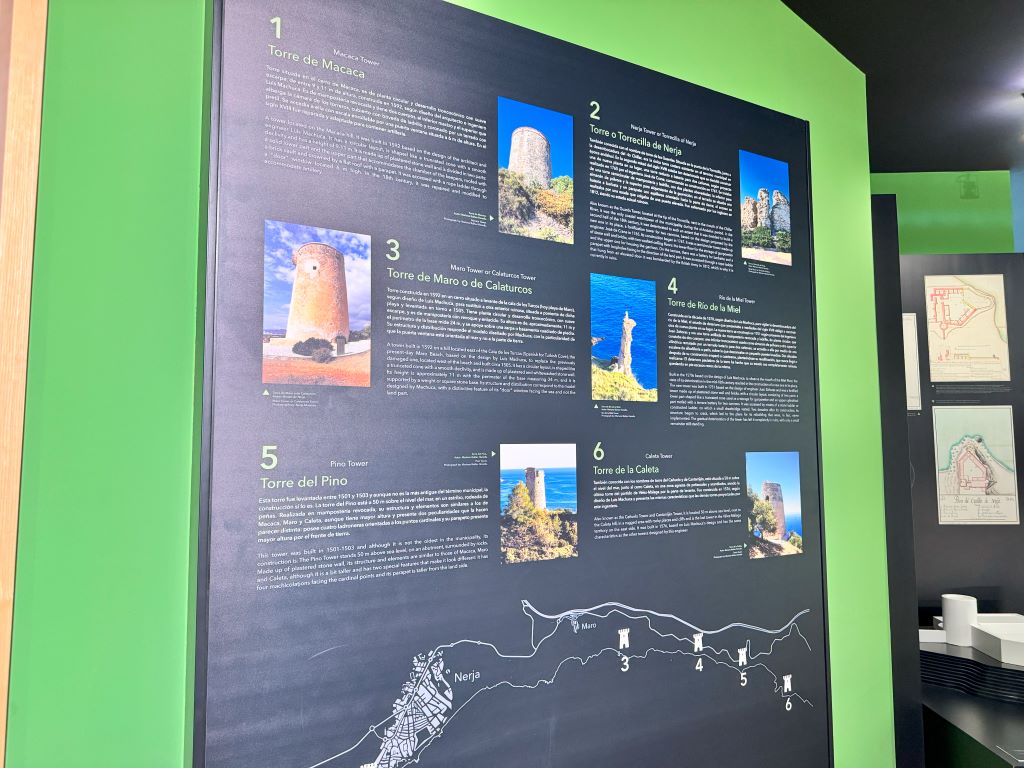
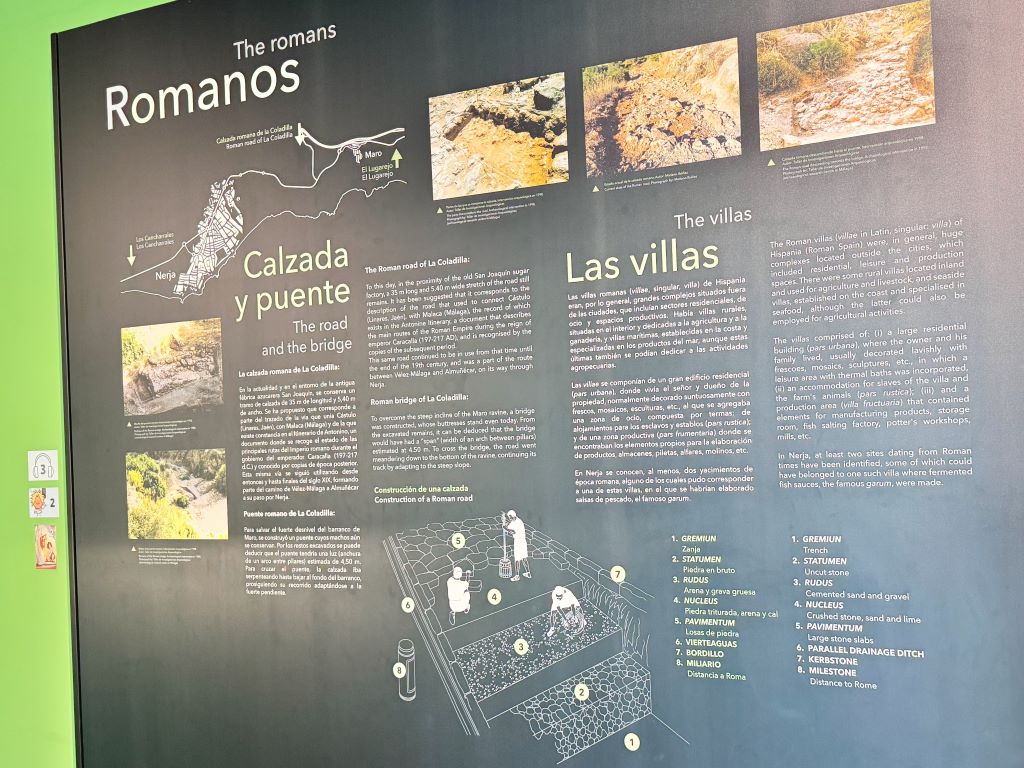
There we also met again our good friend, the Acueducto del Águila (Eagle aqueduct), named after the heraldic simbol of the double eagle that is part of its vane. The diorama is part of an exhibition about the sugarcane farms of Nerja.


In the part of the museum dedicated to the cave of Nerja, we see once again the history of the discovery and beautiful illustrations explaining the life of the pre-historic occupants of the cave.
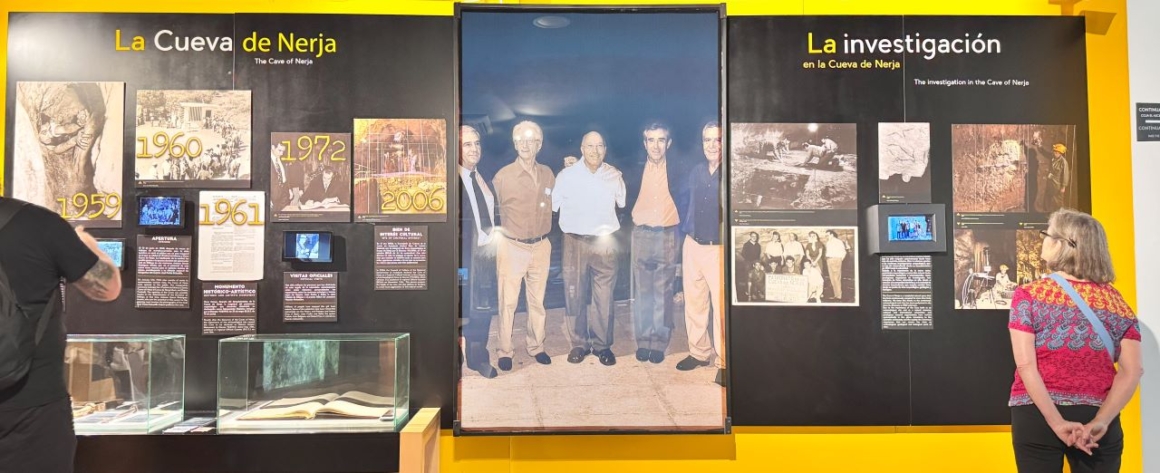

The coolest part: there is one of the skeletons found in the cave!!

What else to do in Nerja?
After the museum we wandered around the town a bit more, and found a few more nice surprises: the Plaza Tutti Frutti, with several pubs/ restaurants, a place we would have visited in the evening, if we were staying for the night in Nerja…
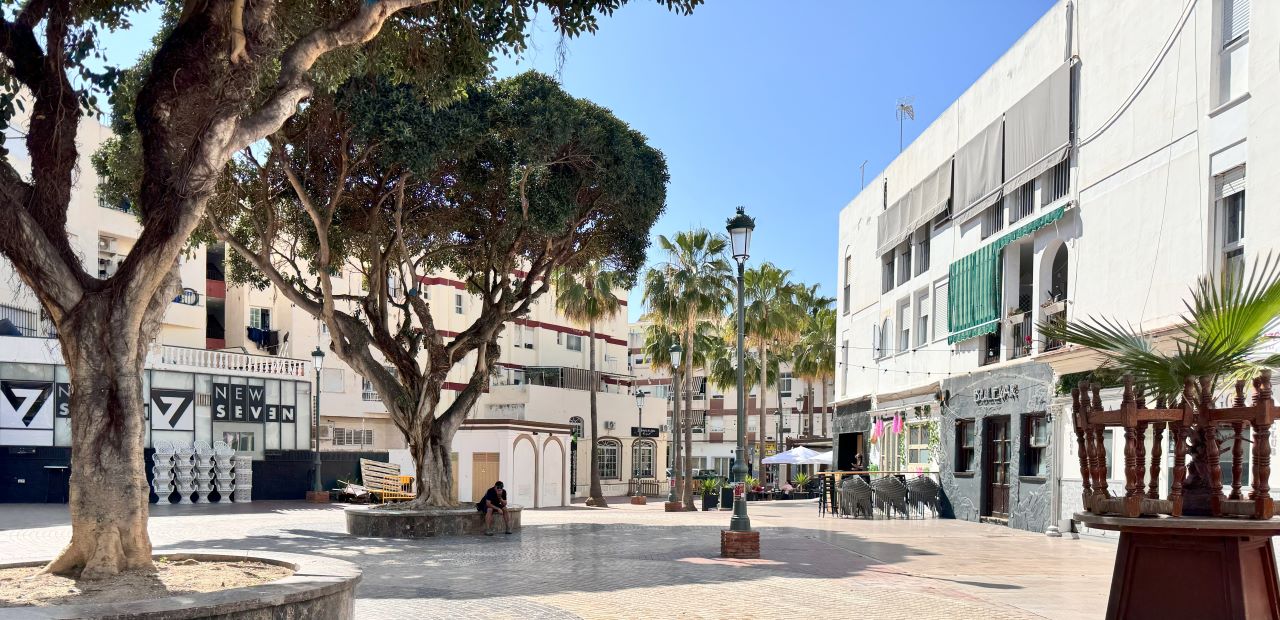
… and the park Verano Azul, named after a TV series that was filmed in Nerja in the 1980s, that looked like a lovely place for kids, parents and grandparents – with a vast playground, fitness area and benches.
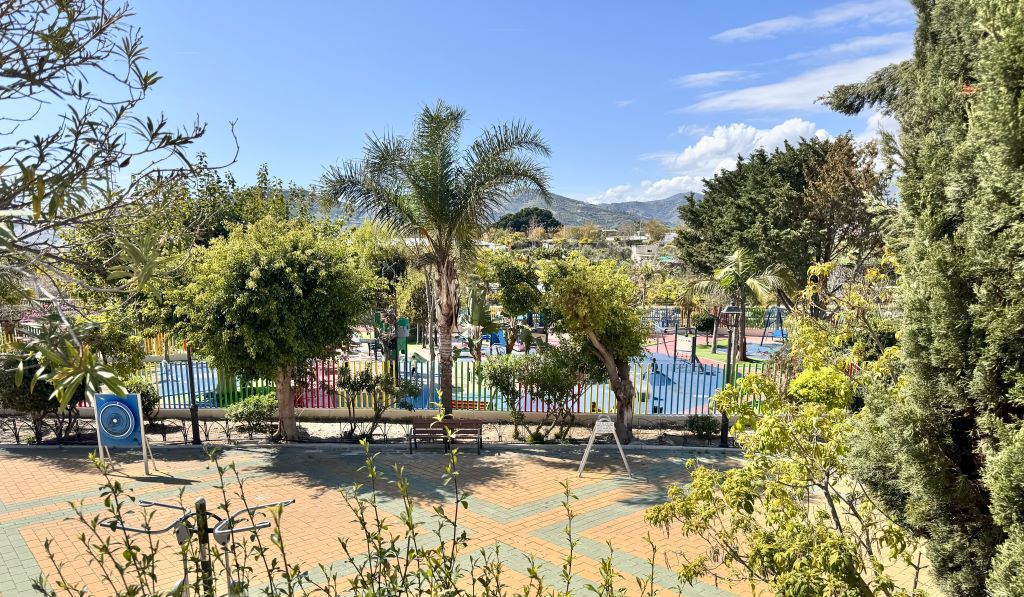
We didn’t have time to go see the most famous and largest beach in town, Playa Burriana (shown below), nor to go visit Frigiliana, though. I guess Nerja was too interesting to just let go!
I gotta add that Nerja is very walkable. We didn’t feel the need to take buses inside the town, as for the most part, it was either flat or had just small inclinations.
Is it worth visiting Nerja?
Yes, it is! Nerja is an adorable town of slightly more than 20 thousand inhabitants, beautiful, preserved and well prepared to receive visitors. Despite being quite famous itself, much of the surrounding towns are more residential than touristic in this part of the Costa del Sol (the Axarquía Coast), which turns Nerja into a more affordable place to visit than the similar cities in the western side of the Costa del Sol.
Nerja has hotels and restaurants for all budgets, flowers and squares everywhere, shops, several beaches, a museum, an enormous cave, and especially, a lot of charm. It is a great place to spend a day or even a week!
How long to stay in Nerja
We’ve spent 1 day in Nerja, and it wasn’t enough to visit everything; I think if we had one more day there, we’d probably have spent part of it on the beach and part on Frigiliana, besides visiting Plaza Tutti Frutti at night. Based on that, I’d say Nerja is better enjoyed as a two-day visit, at least.
If you prefer to take things slowly and enjoy savoring the town bit by bit, I think up to one week would be time well spent. You could even move around and see the neighboring town of Torrox – that is said to have the best climate of Europe – or reach to Malaga or Granada as well, besides enjoying the view, the beaches, the many cute restaurants, the squares… I doubt you would get bored.
Accommodations in Nerja
Use the map below to choose your accommodation in Nerja. Whether you prefer a hotel or a vacation rental, you can pick them from the map below, input your dates and the number of people comming. It is al all-in-one research device! Enjoy! 😉
When to visit Nerja
Nerja is beautiful and has a nice weather all year long, but there are two periods that are special:
– the second week of October, when the Feria de Nerja happen, and
– from mid-June to mid-August, when the Summer festival in the Caves of Nerja take place. This festival has been happening every year since the cave was inaugurated for visiting.
For time and weather reference, the pictures displayed here were taken in April. A very nice time to visit Nerja too!
How to move between Nerja, Frigiliana, Malaga and Granada
Nerja has a main bus stop for the intercity buses, located in the Carretera de Almería, (shown below). In general terms, buses arrive on the left side of the image and depart from the right side, where the awnings are.
That’s where we got the bus back to Málaga. It was a very nice seaside ride, with stops in the major locations along the coastal Axarquía. It is possible to buy tickets ahead, at Alsa.es, or to buy right there, in a little Alsa’s shed. Alsa also operates buses from this location to the Cave of Nerja and to Granada. The buses to Frigiliana depart from the same location but are operated by another bus company, called Grupo Fajardo.
On the day of our trip, the bus to Málaga was priced at € 5,34 and the one to Frigiliana, € 1,30. Check the links to the bus companies for updates prices. 😉
Conclusion
Visiting Nerja was a great experience and I thoroughly recommend going there if you have the time, or even staying there for a few days. Couple it with a visit to the Cave of Nerja and to Frigiliana, spend some time wandering through the streets and enjoying the many squares, beaches and restaurants this cute Costa del Sol gem offers.
We stayed for one day only and came back home planning for more. By the time to go to the bus stop, my in-laws were already stopping in front of real state shops, looking for house prices and imagining a possible future there… (I’d love it)! So be informed that Nerja has this effect on people: it creates relocation dreams. I’m sure some of them come true!
